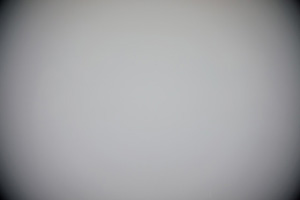|
Sony E 16-50mm f/3.5-5.6 OSS PZ (SEL-1650) - Review / Test Report - Analysis |
|
Lens Reviews -
Sony NEX
|
|
Page 2 of 3

Distortion
The native distortion reaches epic dimensions at the wide-end of the zoom range. At 16mm it almost behaves like a fisheye lens with a barrel distortion of more than 7.5%. As such it is obvious that the lens was never meant to be used without distortion auto-correction which is available for JPGs by the camera or via Sony's RAW converter. In order to provide a framework for comparison with Sony's E 18-55mm f/3.5-5.6 OSS, we also tested the 18mm setting. The barrel distortion has eased a little here but beyond 6%, things remain bad. Distortion isn't much of an issue at 25mm (1.5% barrel-type) and 55mm (0.5% pincushion-type).
With ACTIVATED distortion correction - see below - things are very acceptable with a max. distortion of just above 1%.
Vignetting
The above behavior also applies to the vignetting characteristic. With DEACTIVATED distortion (& vignetting) compensation, the figures are among the very worst we have ever tested (5EV at 16mm f/3.5). The corners are essentially black here. The vignetting remains unacceptable even at f/11 at the wide end of the zoom range.
 Below's a visual representation of the problem. It is obvious that the lens has been purposely under-designed - the native image circle of the lens doesn't fully cover the APS-C image frame.
Below's a visual representation of the problem. It is obvious that the lens has been purposely under-designed - the native image circle of the lens doesn't fully cover the APS-C image frame.
 |
 |
| 16mm f/3.5 | 16mm f/11 |
Now with ACTIVATED distortion correction (& DEACTIVATED vignetting correction), things aren't looking quite as severe since the corners are pushed beyond the image frame in this case. The vignetting is still poor 16mm @ f/3.5 but Okay from f/8 onward. For further optimizations you can then activate the vignetting compensation - at cost of increased sensor noise in the corners.

MTF (resolution)
The native resolution characteristic is a bit of a mixed bag. Unsurprisingly the results are worst at 16mm. The center performance is fine, stopped down even excellent, but the outer image region is rather soft - especially at max. aperture. At 18mm the borders are boosted to good level followed by acceptable corners. The corners remain a bit blurry at 25mm f/4.5 and 50mm f/5.6 but after stopping down by one f-stop the results are quite sharp across the image frame here.
Please note that the MTF results are not directly comparable across the different systems!
Below is a simplified summary of the formal findings. The chart shows line widths per picture height (LW/PH) which can be taken as a measure for sharpness.
If you want to know more about the MTF50 figures you may check out the corresponding Imatest Explanations
 Since the lens is really meant to be used in auto-correction mode, we also had a look at the impact here. Distortion auto-correction is essentially a combination of image stretching, cropping and upscaling - which is a lossy procedure as you can imagine. The image center isn't really affected but, unsurprisingly, the quality of the outer image region deteriorates.
Since the lens is really meant to be used in auto-correction mode, we also had a look at the impact here. Distortion auto-correction is essentially a combination of image stretching, cropping and upscaling - which is a lossy procedure as you can imagine. The image center isn't really affected but, unsurprisingly, the quality of the outer image region deteriorates.

Chromatic Aberrations (CAs)
The amount of CAs (color shadows at hard contrast transitions) is also on the high side varying around the 1.5px mark at the borders in the lower portion of the zoom range. In the extreme corner the CAs can even exceed 2.5px. However, you can argue again that CAs can be auto-corrected and unlikely the other characteristics, it is a lossless procedure here.

|